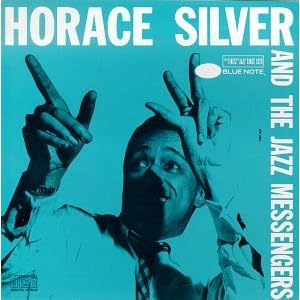On
the occasion of what would be the 88th birthday of Barney Kessel (1923-2004) . . .
. . . and
also, remarkably, what is the 53rd of another guitar virtuoso, Howard Alden, a
keeper of Barney Kessel’s flame . . .
. . . I reproduce this reminiscence of Kessel’s cited
by Wayne E. Goins and Craig McKinney in The
Biography of Charlie Christian, Jazz
Guitar’s King of Swing (Edwin Mellen Press, 2005, 286-88).
In 1981, in
preparation for a special Charlie Christian issue, Jas Obrecht, who had edited
Barney’s column for Guitar Player magazine
since the late ‘70s, interviewed him. In that interview Barney elaborated upon not only what Charlie meant to him personally, but also upon the context of jazz guitar playing that Charlie had burst into and then transformed. This valuable interview was never published until earlier this year
when Mr.
Obrecht posted it on his blog, to which I hope jazz aficionados will turn after visiting mine. What now follows is Goins and McKinney's introduction to Barney Kessel recollection taken from that earlier interview:
One
of the places Charles [Christian] dropped by while on vacation, at the behest
of a friend who worked there as a waiter, was the Oklahoma Club. As he worked, the waiter listened to the band
blow and was quite taken by a young guitarist whose style had shadings similar
to the unique Charlie Christian approach. The guitarist was Barney Kessel, who
was still in his teens. Years later, Kessel recounted the incredible story of
how he got to know Charlie Christian for Guitar
Player magazine:
Around October of 1940 [i.e., the month Kessel would
turn 17.--T.F.] I was going to high school and playing with a college band from
Stillwater, Oklahoma called the Varsitonians. We were playing three nights at
the Oklahoma Club in Oklahoma City during some time off from classes. The first
night I was taking a lot of solos on electric guitar, and throughout the
evening I noticed that a young black waiter kept looking at the bandstand listening
and smiling, and when I would play a solo he would nod and grin. He became very
animated and showed me from a distance that he really did like what I was
doing.
When we took an intermission this waiter approached me
and told me that he did enjoy the way I played and was surprised to find someone so young
playing solo guitar. He went on to say that he knew Charlie Christian. He also
said Charlie was there in Oklahoma City at the time, and that he intended to
call him and tell him about my playing. Well, I didn’t believe that at all; as
far as I knew, Charlie Christian was playing with the Benny Goodman Sextet
somewhere in New York—certainly not in Oklahoma.
So in the middle of the next set I was absolutely
astounded and bowled over when I looked down and in front of my very own eyes
there was Charlie Christian looking up at me, registering his approval of the
music and what we were doing. He was tall and very lean, and he must have been
about twenty-one then. [Born in July 29, 1916, Charlie Christian was 24 in
October 1940.--T.F.] I was just overwhelmed! I guess for me to see Charlie Christian
at that time would be very much like a twelve-year-old girl having The Beatles
look at her during their hey-day.
He seemed genuinely happy to be in my company, and of
course I was delighted to be in his; so when he found out I was going to be in
town for two more nights, he suggested that we might get together the following
afternoon to jam. Well, I hadn’t dared
to bring this up, just out of respect for his artistry and his stature, but
since he suggest it I was all for it.
So that night I went to bed almost unable to sleep,
just thrilled beyond belief over being able to meet this man and have him be so
nice and helpful. I say it over and over again, because I did respect him so
much.
Charlie
kept his word, and over the next two days, he spent some quality time with the
young Kessel, who couldn’t believe what he was experiencing.
Finally, when we had finished playing and Charlie was
taking his leave, I just thanked him over and over for having allowed me to jam
with him and told him how I would never forget him or that day. He walked away
a few steps, then turned and smiled. I can recall today his last words to me
and just the way he said them, they inspired me so much. I lived on these words
for a long, long time, and they helped me to build a sense of worth in myself. He
walked away just a few steps and turned around and said, “I’m gonna tell Benny
about you.”
[Barney
would first play in Goodman’s orchestra seven years later.--T.F.]



















